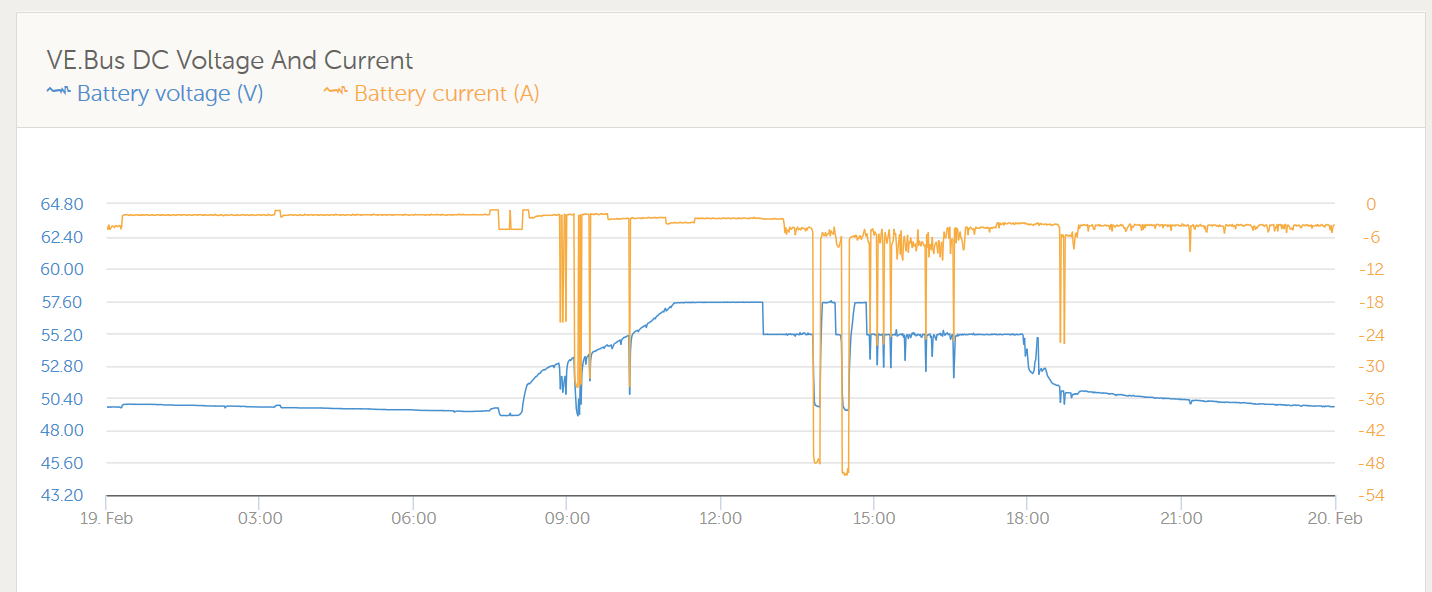So, after this topic coming up in multiple different threads recently, @Leslieanne proposed a theory as to why so many users are finding their Smart/Blue Solar units are only doing ~1hr absorptions, despite having quite a low battery voltage at sun up.
In short, the theory is that if you have significant enough shading on your panels at some point during the bulk stage, the panel voltage drops below cutoff, as if encountering 'sundown'. When the shading is removed, it goes through another 'sunrise' and recalculates the absorption time, using the below table...but with a new, much higher battery voltage - resulting in drastically shortened absorb phases.

Considering I personally run float=absorb, I've never actually looked at my 'absorb' times. So I decided to test this. For the last 5 days, I've run my batteries (370Ah) down to 30% each night to guarantee consistently low startup voltage, then isolated any loads all the way until the next sundown (ie no power draw while charging). Whilst it's meant a week of cold meals (which have not impressed the wife) this has guaranteed a consistent test environment, in which the controller SHOULD provide the full max absorb time - set at 6 hrs.
And it did! Well, at first: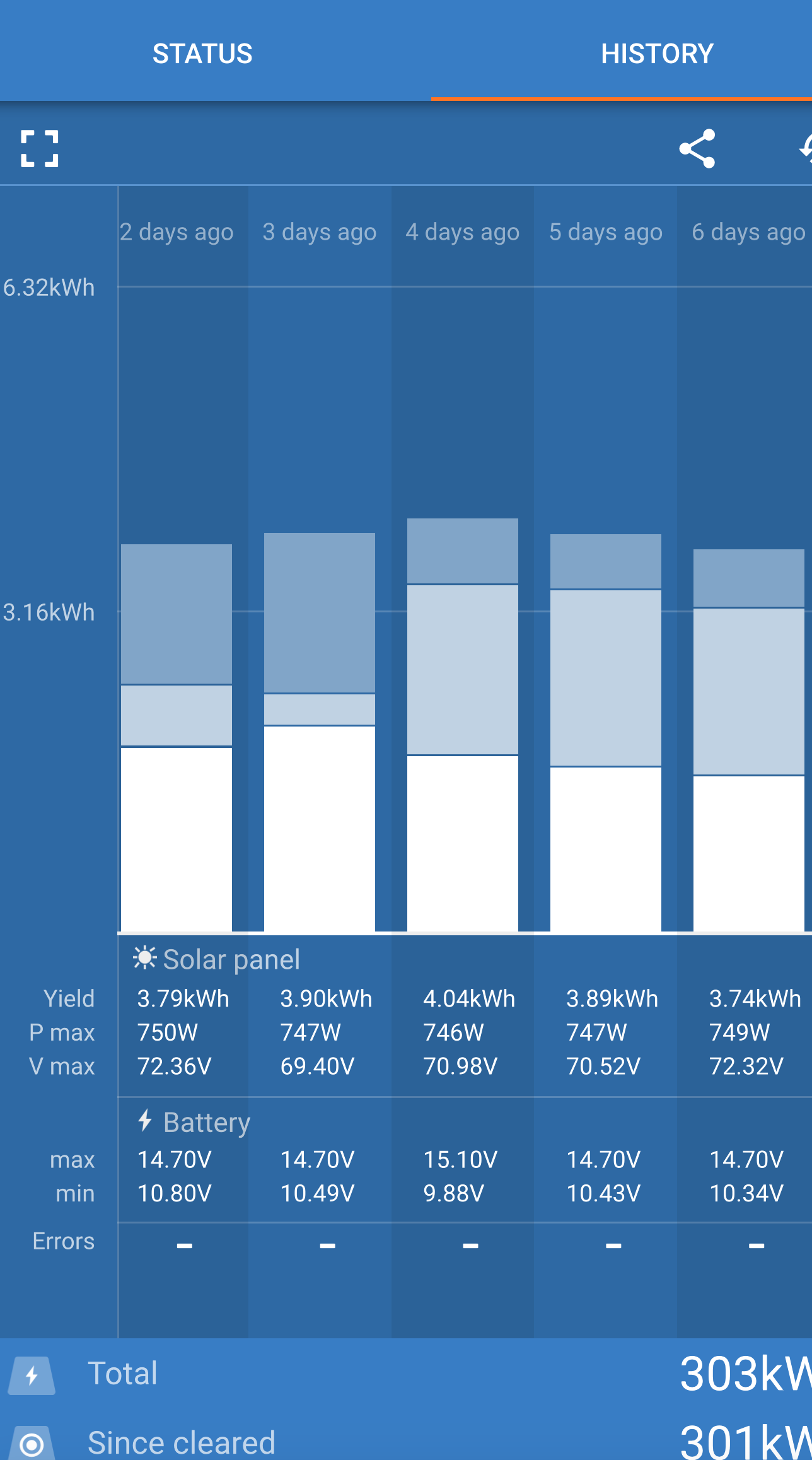
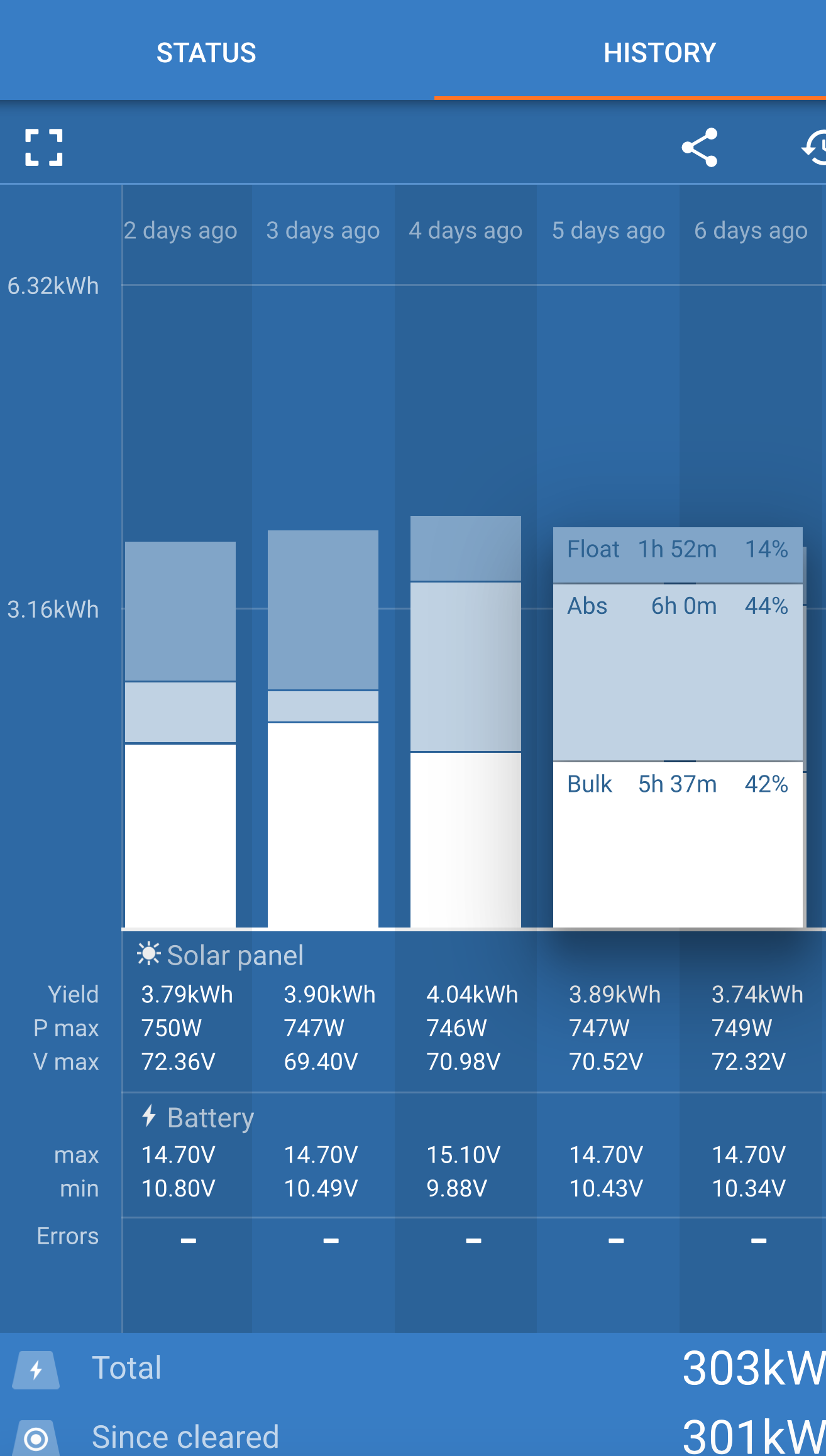
Left to right, Days 1 to 3 were slightly cloudy but steadily clearing, hence the increasing yield. Day 3 in particular was solid sun and I was able to get a full 110% overcharge and even a brief equalization, completely restoring 100% charge. Importantly, each day correctly ran the max absorb time. The fun begins on day 4.
Being a sunny day, I had to resort to 'simulated' cloud i.e driving under a roof. Once the battery V reached 13v, I did one short tunnel pass and noted that sure enough, the controller drops out of charge and the blue 'bulk' light flashes, just like after sundown. It only takes a few seconds of sun loss, and sure enough....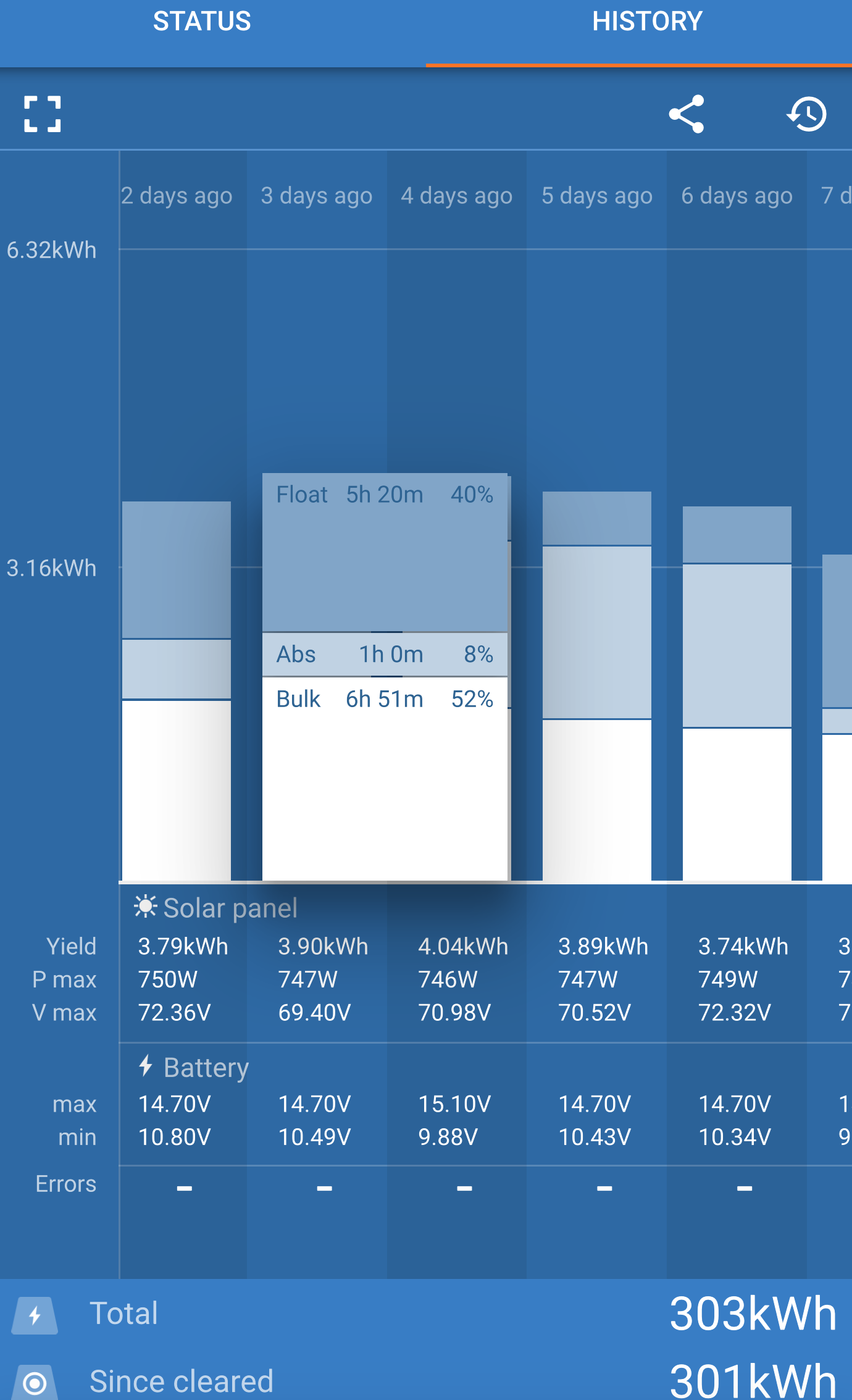
As shown, the controller reset and recalculated a 1 hr absorb, based on a 'startup' voltage of 13.0v. Two further things to note here
Firstly, the total yield in this case has remained more or less the same , due to my float v = absorb v. Had this not been the case, by the end of the week I would have certainly totally killed the batteries.
Secondly this was with 70V panels on 12V batteries. With more typical 12/24V, I suspect you could trigger this with even cloud or treeshade.
As it happens, I tested this on the last day anyway. A storm front blew over and we had a good 5 minutes of twilight under some good Cb. Quick check to the meter and yep - the Victron dropped out at 12.4v, panel V fluctuating around 15-20v. Lo and behold, the result - a 1/3 absorb.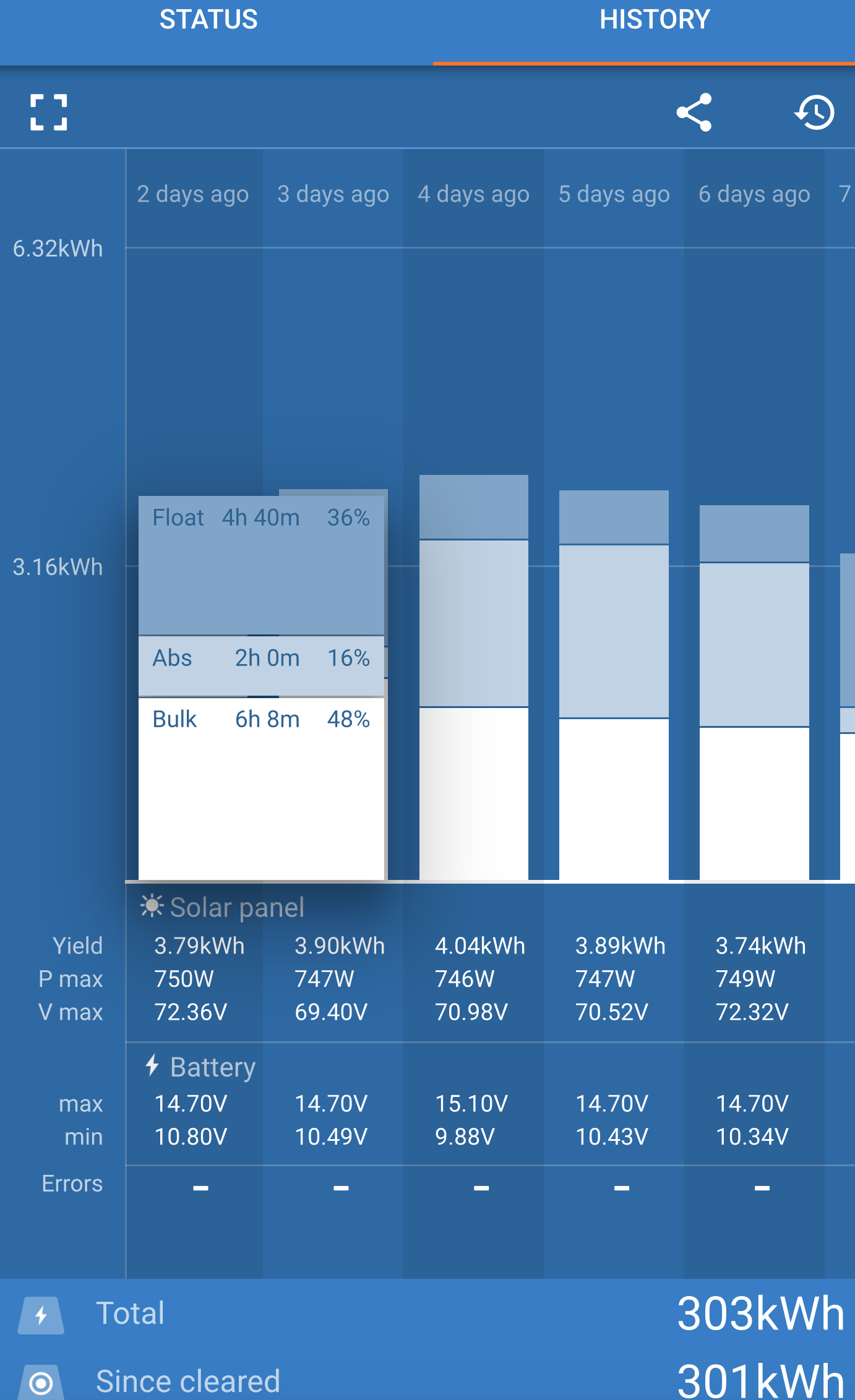
So, the conclusion?
These MPPT units are undeniably vulnerable to spurious absorption calculation, but @Solvan s theory that its due to inaccuracy in the units measurements is incorrect; they are accurate enough for their purpose, the problem is their own calculation algorithm.
Regardless of panel voltage, even a few seconds of major solar interruption by common events (driving through shade, sail blocking, dark clouds) will entirely disrupt this algorithm. This would be especially exacerbated if you were running a load at time of solar interruption, dragging V down further and likely cutting the most critical phase of charge by 80%. If you're not actively watching your SoC, or at least your end amps during float, this could easily result in chronic cumulative undercharging.
Victron needs to sort this out - this has the potential to damage customers' batteries. Its a very simple matter of extending the time required for low panel voltage to trigger a controller shutdown, from a few seconds to maybe an hour or so.
( Or, yknow - having a manual absorption configuration like every other controller on the market...)
@mvader (Victron Energy Staff)
@Guy Stewart (Victron Energy Staff)
@lnanne
@JasonTav
@Troy

